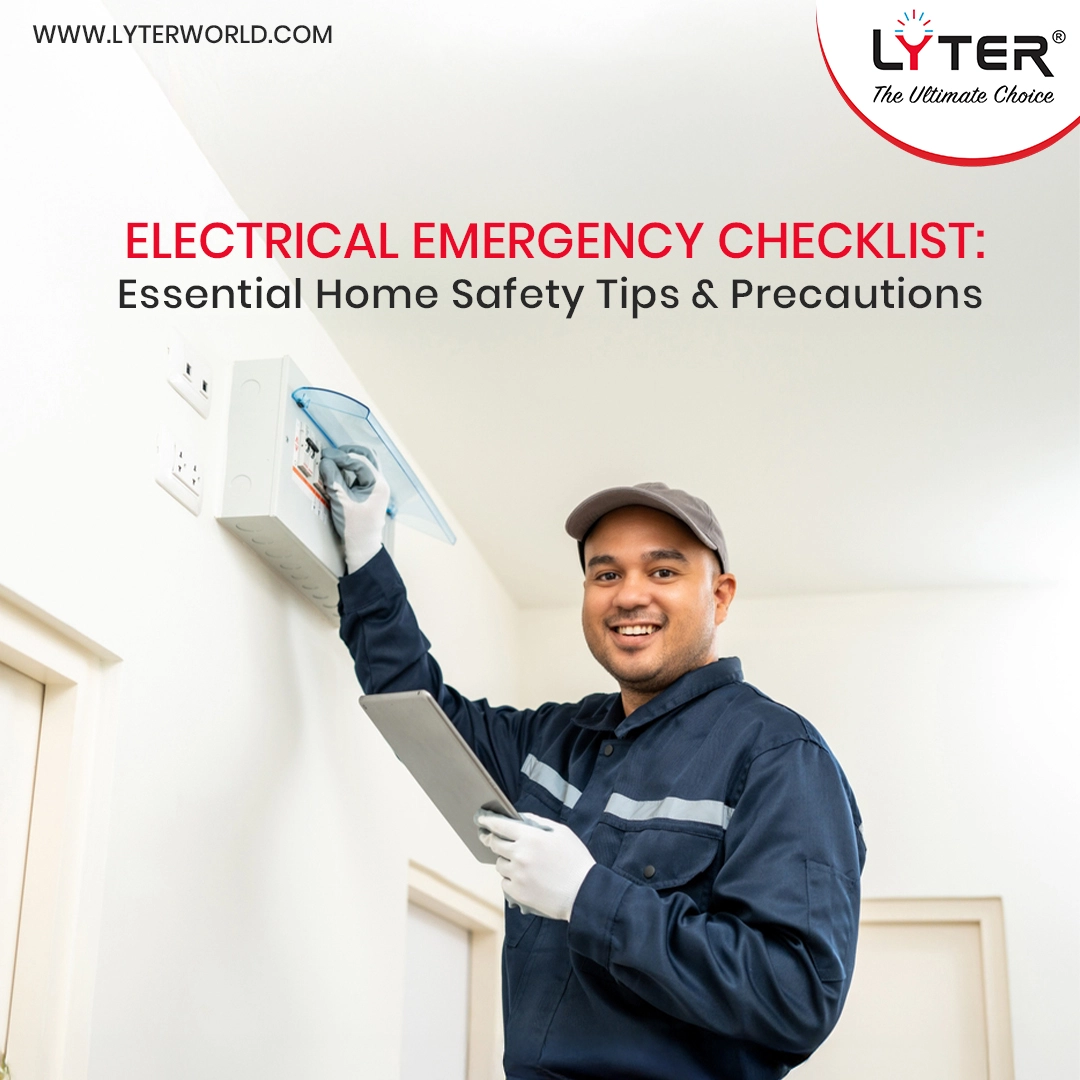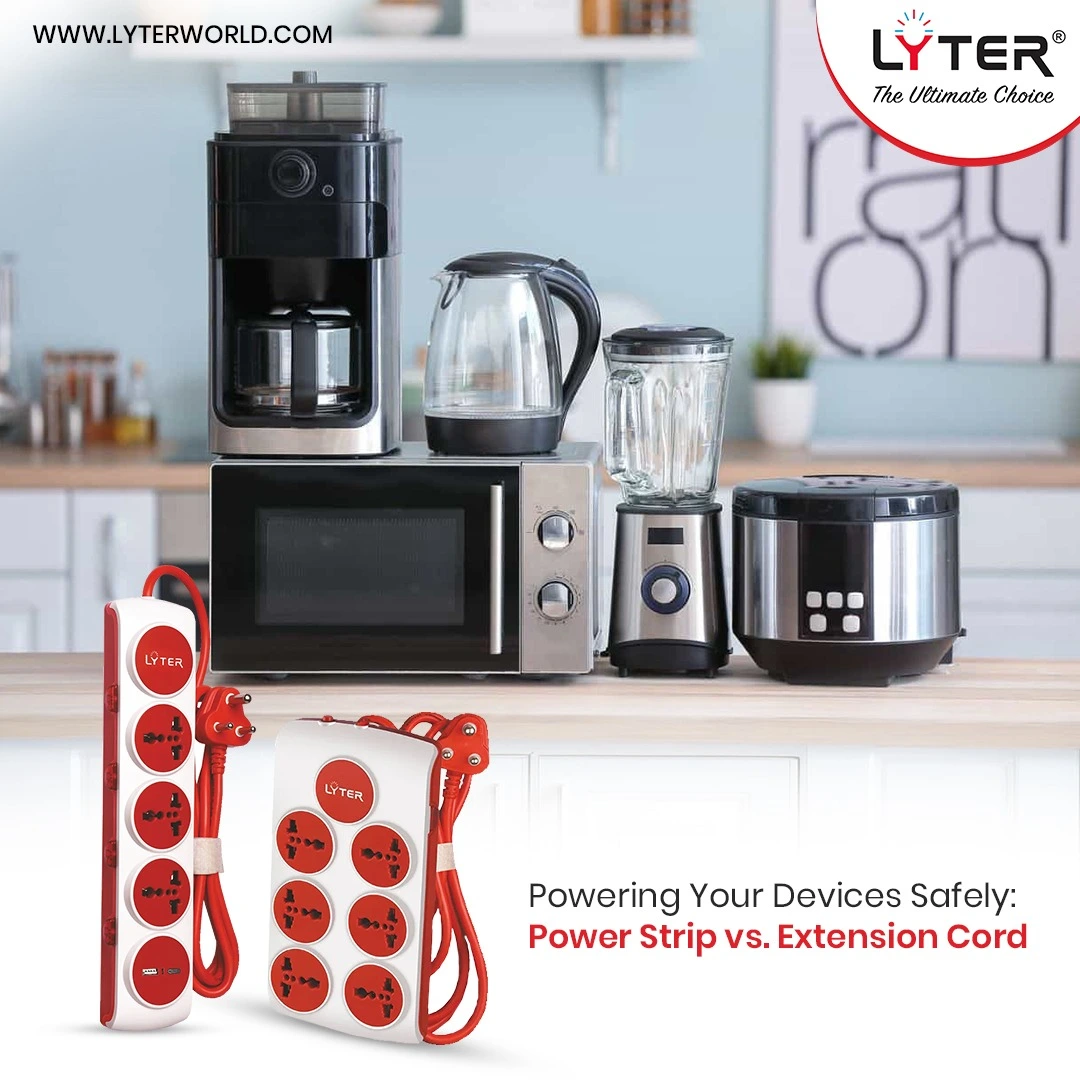Electricity is a silent companion; it powers your mornings, lights up your nights, and keeps your appliances running, and with all this, it makes your life easier. But when things go wrong, it can turn from a friend into a formidable foe.
An electrical emergency at home is one of those moments that tests both preparedness and presence of mind. Fires, shocks, sparks, or sudden power failures don’t wait for convenience. They demand quick action and, more importantly, a safety-first mindset.
In this blog, you’ll get an electrical emergency checklist, a practical guide every household should have in the back of their mind.
1. Stay Calm, Stay Clear
Chaos is fueled by panic. The first guideline is to remain composed in the face of an electrical emergency, whether it involves sparks shooting from an outlet or a burning smell coming from a device. If it’s safe to do so, cut off the primary power source right away. Avoid using your bare hands to handle cables, extension cords, or appliances, especially if they are damp or damaged.
2. Know Your Main Switchboard
Every family member should know where the main breaker panel is located and how to shut it off in the case of an electrical emergency. This small piece of knowledge can prevent accidents from escalating. Think of it as your home’s emergency brake. In most situations, flipping that switch is the fastest way to contain damage.
3. Keep Extension Cords and Power Strips in Check
An alarmingly high percentage of electrical mishaps are caused by cheap power strips, poorly maintained extension cables, and overloaded outlets. Beyond convenience, there are additional reasons why buying a high-quality extension cable online is crucial. Invest in heat-resistant, certified ones. Remember that daisy-chaining multiple power strips together is a certain way to end up with a disaster. Instead, carefully organize your connections and unplug any devices that aren’t in use.
4. Fire First Aid: Extinguish, Don’t Splash
Never seek water if a little fire starts in a socket or appliance because it transmits electricity. Instead, use a Class C fire extinguisher. The safest course of action if you don’t have one is to escape the area and contact your electrical emergency agency.
A preventative technique is to keep flammable items (such as papers or drapes) away from heat-generating machines. Regularly checking for loose connections or overheated plugs is also beneficial; these are little indicators that, if disregarded, might quickly turn into the spark that ignites a larger fire.
5. Emergency Numbers on Speed Dial
Despite its apparent simplicity, many individuals make blunders in emergency situations because they don’t know who to call. Keep on your phone the contact details of a reliable local electrician as well as the emergency number of your local electrical board.
To make it easy for the elderly or little children at home to discover the numbers, post the same digits on your refrigerator or mainboard.
Take it a step further and post the contact information for the closest fire station and the electrical emergency number in a prominent location for everyone to see. Inform your regular guests or domestic help about these figures as well. Even having these connections pinned on your family WhatsApp group might be really helpful in today’s digitally savvy environment.
6. Create Your Electrical Safety Checklist for Home
Preparedness is half the battle. Here are a few proactive checks you can turn into a monthly ritual:
- Inspect cords, plugs, and switches for wear and tear.
- Avoid running wires under carpets or rugs.
- Don’t overload sockets with high-wattage appliances.
- Test your Residual Current Circuit Breaker (RCCB) or safety switch periodically.
- Replace outdated or flickering fixtures promptly.
You can also schedule a routine inspection by a certified electrician once a year to ensure hidden wiring and internal connections are in good shape. This electrical emergency checklist for the home may look simple, but it can prevent situations that spiral out of control and save you from costly repairs later.
7. Teach and Train Your Family
Being safe is a team effort. Explain to children why electricity and water never combine, educate them to disconnect equipment by the plug rather than the cable, and warn them not to touch wires. Larger accidents can be avoided with even minimal vigilance. Consider it akin to teaching traffic safety, a way of imparting life skills.
To ensure that everyone feels secure and not in the dark in the event of an electrical disaster, encourage family members to take part in simple safety exercises, such as finding the main switch or knowing the emergency numbers.
8. When in Doubt, Call the Experts
Sometimes, do-it-yourself solutions aren’t sufficient. Warning indications include buzzing sounds coming from outlets, the smell of burning wires, or breakers tripping repeatedly. Don’t attempt to “make do” or ignore them. Make an instant call to an electrical emergency service. Skilled experts are able to identify problems and address them before they become catastrophes.
Actually, doing dangerous repairs by yourself can exacerbate the damage and put lives in jeopardy. While making a brief phone call to an expert may seem inconvenient at the time, it guarantees long-term security and comfort.
Plug Safety into Everyday Awareness with Lyter
An electrical disaster happens quickly and without warning. However, you can safeguard your loved ones and your house with the correct planning, mindset, and equipment. Create your checklist, teach your family, and pick the appropriate items for daily use.
At Lyter World, we believe safety and reliability go hand in hand. From durable extension cords online to tested power strips, every product is designed with your household’s security in mind. Our accessories are built to withstand daily wear, reduce risks, and make safety second nature in your home. Because in the end, peace of mind starts with plugging into Lyter, where quality meets care.







